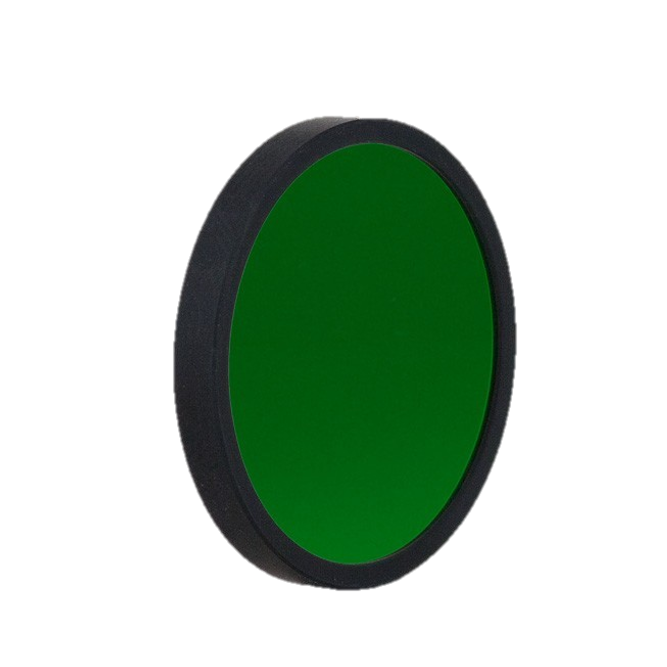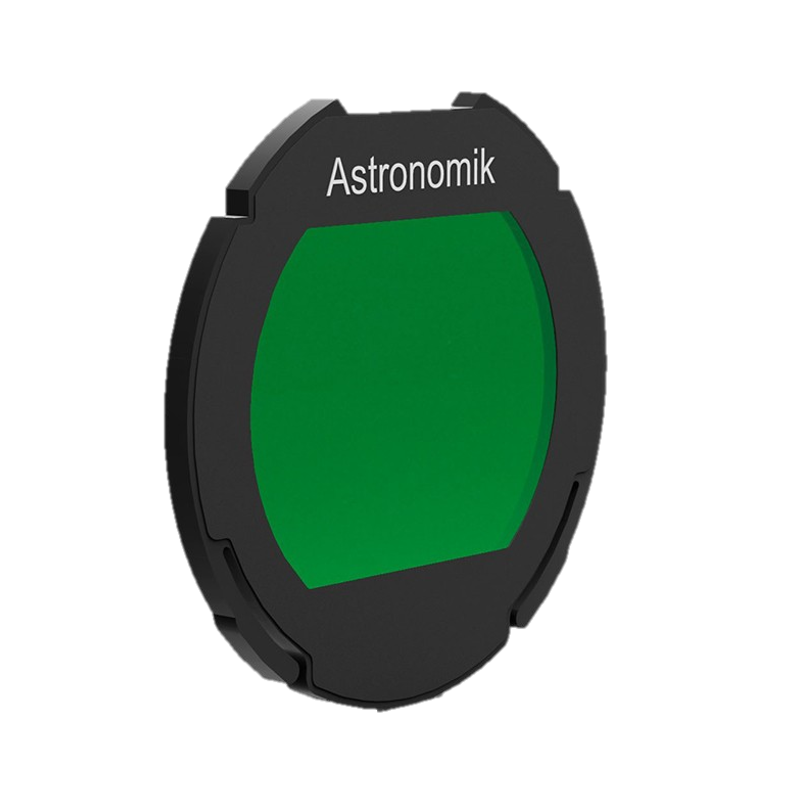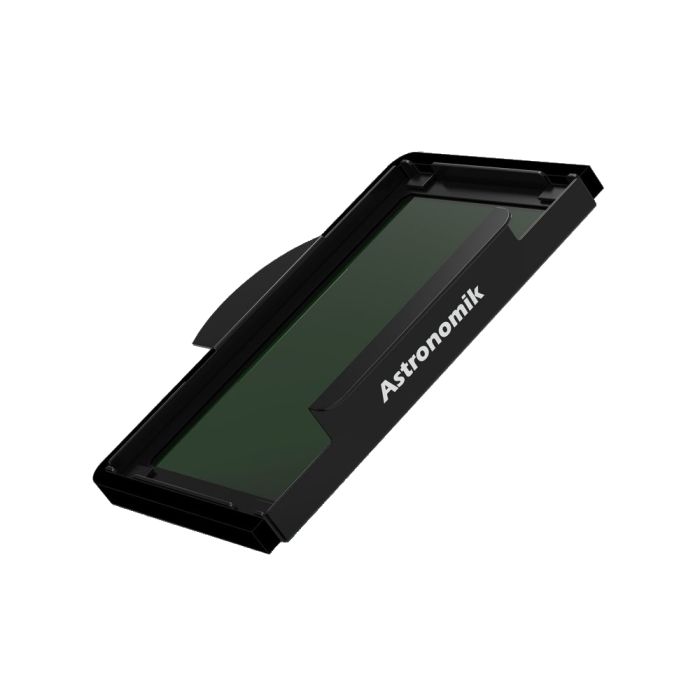Astronomik OIII Filters are essential for isolating the Oxygen III emission lines, making them ideal for nebula observation and astrophotography. Their narrowband design enhances contrast, even in light-polluted skies. Related to astrophotography upgrades, as shown in the "Top 5 Upgrades for Advanced Astrophotography" video, filters like these significantly improve image quality.
Highlighted Products
Featured Product 1
The Astronomik OIII 6 nm CCD Filter - 2" Round Mounted is designed to enhance astronomical imaging by selectively transmitting the oxygen-III emission line while blocking unwanted light pollution. This filter provides exceptional contrast and clarity for deep-sky objects, making it ideal for astrophotographers seeking to capture intricate details in nebulae.
Featured Product 2
The Astronomik MaxFR OIII 6 nm CCD Clip-Filter is designed for Nikon XL Full Frame cameras, enhancing astrophotography by isolating OIII emission lines. Its narrowband transmission reduces light pollution, allowing for detailed images of celestial objects. This filter is ideal for capturing deep-sky phenomena, making it essential for serious astrophotographers.
Featured Product 3
The Astronomik H-Alpha 12 nm CCD Filter for Canon EOS R XL Full Frame cameras optimizes astrophotography by allowing only H-alpha wavelengths through. This narrowband filter enhances contrast and detail in emission nebulae, effectively reducing light pollution. It's a crucial tool for astrophotographers seeking to capture stunning deep-sky images with precision.
More About This Category
The Astronomik OIII filter is an essential advancement in astronomy that provides both amateurs and experts with an effective instrument to improve their observations of celestial objects. The delicate intricacies of nebulae, planetary nebulae, and other astronomical phenomena can be seen thanks to these filters, specifically made to isolate the doubly ionized oxygen (OIII) wavelength. Astronomik OIII filters are known for their remarkable optical quality, which enables astronomers to explore the depths of space with never-before-seen clarity. They are meticulously and precisely manufactured.
Numerous filters are available in the market, each with diverse features important to Astronomy. As the leader in astronomical instruments, the Astronomik OIII filter is different from the others as it completes the imaging system that can reveal the complex beauty of nebulae in previously unheard-of detail.
Astronomers frequently ask about the compatibility of Astronomik OIII filters with various telescope configurations. Because of their adaptability, these filters can be readily included in multiple optical systems, including reflectors, refractors, and catadioptric telescopes. Given their modular construction, they can be threaded into conventional filter threads, so various telescopes can use them without needing additional adapters.
Understanding the underlying concepts of observational astronomy and astrophotography is necessary to appreciate the significance of OIII filters. Nebulae emit light at particular wavelengths, frequently made of ionized gasses. One of the most essential characteristics of the ionized oxygen spectrum is the OIII emission line, which appears at about 500.7 nanometers. Astronomik OIII filters allow astronomers to pass this particular wavelength selectively while blocking others. This increases the contrast and visibility of OIII-emitting structures in the night sky.
Astronomik OIII filters are essential for obtaining fantastic nebula photos with improved contrast and detail in astrophotography. Increasing the signal-to-noise ratio enables detecting faint features in areas with abundant OIII emissions. Astrophotographs of interstellar gas clouds produced by these filters are visually arresting due to their selective enhancement of specific wavelengths. Since these filters are constructed from premium optical glass and tested extensively to guarantee resistance to scratches, temperature changes, and time effects, astronomers frequently inquire about their longevity and durability.
What does it have to do with High Point? The answer to this question is clear as day. We bring you the top-notch German-made Astronomik OIII filters.

Astronomik OIII filters - Designed for astrophotography, offering nearly 100% OIII line transmission and a close to 6 nm FWHM bandwidth. Ideal for instruments with a minimum 6" aperture.
Astronomers and enthusiasts use Astronomik OIII filters optimally in low light pollution, clear and stable atmospheric conditions. The choice of telescope and eyepiece combination also plays a crucial role in maximizing the filter's benefits, revealing OIII-rich nebulae's hidden beauty.





